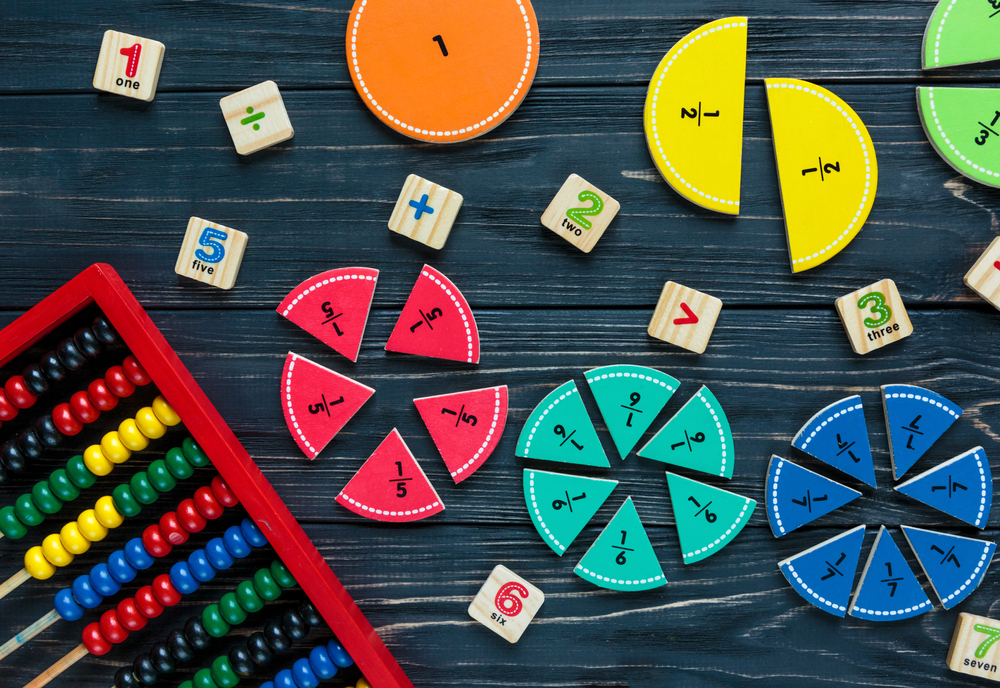Leap Year Crafts and Activities for Kids
Feb. 24, 2020
As adults, we already know that the usual calendar year is composed of 365 days. But every 4 years, we have an extra day at the end of February known as a leap year. Most of us accept this as a fact of life without thinking too much about it, but have you ever thought about why February 29th only comes around every 4 years? Even if you have, surely your curious little learners may be asking a few questions at the end of this month, especially considering that it may be the first leap day your child may actually take notice!
For your children or students, make this leap year one to remember by turning it into a memorable learning experience complete with crafts and activities to celebrate this rare day. Join us for a brief lesson in history and science before finding 4 fun leap year activities to use in the classroom or at home on February 29th!
What is a leap year and why do we need it?
Believe it or not, calendars are a purely human invention. Over thousands of years, many different types of calendars were invented to keep track of time and seasons, dating all the way back to the ancient Sumerians during the Bronze Age! Ancient iterations were created based upon observation of the solar system and the moon, but when the Julian calendar was introduced and later reformed by Julius Caesar himself, it was based upon a rule that included a leap day every four years.
As we already know, Earth takes 365 days to travel around the sun, but what we might not realize is that it’s not so exact. Humans have created a time system and calendar year to fit our lifestyles, but the Earth does not travel based upon how humans want it to! In reality, the time it takes for our planet to revolve around the sun is known as a “tropical year” and is approximately 365.242189 days. This means that it actually takes 365 days and some 5 hours to complete a full year. Without a leap day every four years, eventually our calendar would shift days to account for the hours that the Earth took to complete its journey that humans didn’t account for each year. Eventually the seasons would not be in sync with our calendar on the wall!
The revised Julian calendar was the first to include this calculation, but the Gregorian calendar that we now universally follow strives to be even more accurate. To calculate which years should include an extra day, our current calendar uses the following rules:
- The year must be divisible by the number 4
- If the year is also evenly divisible by 100, then it is not a leap year
- However, if the year is evenly divisible by 400, then it is still a leap year after all
The year 2000 was a special one, because it was the first time since the Gregorian calendar was adopted that the third rule above was able to be applied! With that said, it is more accurate to note that leap years fall almost every four years, but clearly that is not always the case! To be sure, follow the formula above.
To make things even more confusing, we also sometimes add a leap second into a year to help even things out. The last time a second was added to Coordinated Universal Time (UTC) was in 2016, which was also contained the last leap year. Include these fun facts into your lesson, and your children will sure to be intrigued by the mysteries of time and space!
Leap Day Activities and Crafts
While the above may be all too confusing for an elementary student to grasp, children can still understand that the revolution of planet takes just a bit more time than 365 days. Support your child’s learning with the following fun ideas to make this February 29th more memorable:
Host a leap day party
As a parent or teacher of younger children, you might not be so sure that your little ones will fully grasp the concept of leap days. If you’re looking for a great idea ideal for kindergarten or preschoolers, look no further than a fun classroom party decked out in green!
Associating leap year with cute kid-friendly animals such as frogs or toads is an easy way to make the leap year more understandable to little learners. Try the following ideas to plan your party:
- Plan to bring in or have students or kids help with making all green foods! Eat pistachio pudding, and collect green candies to use, such as M&M’s, Skittles, or buy in bulk from a party supply store such as Oriental Trading. With some food coloring, bake cupcakes with green frosting, or make green sugar cookies to share!
- Make your classroom or learning space into a marsh for the day! Create lily pads using butcher paper, or deck out a table in green and white tablecloth.
- Lay down some painter’s tape in an open area on the floor to create a hopscotch board. Have children hop through the board to get to the treats!
- Host a special frog-themed story time! Frog and Toad books can supplement your leap year party, adding another fun activity to the celebration.
Don’t forget to explain to kids the reason for the party! An extra day in the year means an extra day of fun! Celebrate leap year with your littlest learners in this fun, easy-to-understand way!
Play a game of leapfrog to practice skip counting
For many children, 2020 is the only chance they’ll get to celebrate a leap year in school, or at least in a fun-filled way! If you work with second graders and up, you can guarantee they won’t do anything too special for middle school when the next leap day rolls around. Make the most of it now while practicing math skills using the following exciting game! The following games can be modified to play with siblings or friends in a home setting, or it can be played by a whole class in school!
For younger students, and if the weather allows, head outside with a box of sidewalk chalk to create an open number line on the ground. If indoors, simply use painter’s tape, but create a large enough space for students to skip hop across the classroom. Decide how your children will skip count. For beginners try skip counting by tens or fives, and for older kids up the ante by challenging them to skip count using various numbers, like by threes or fours. The first student calls out the first number, while the second player will leapfrog over the first to land on the open number line to call out or write down the next number. This continues until all students have had a turn, or until they reach the end of the number line!
Leap into the future with skip counting
If you liked the previous idea but have a group of students who are a little more advanced, try this variation to help them determine when they can expect more leap days in the future.
Follow the above steps to start, but instead of merely skip counting, now your students will be skip counting by year. Once again create an open number line, but this time it turns into a timeline that includes future leap years. Be sure to write out the rules for determining leap years on a white board for kids to refer to as they play. After reviewing the rules, determine the starting year. For instance, the first number that appears on the number line could start with 2020, or if they were born in 2012, start there.
Like in the last game, instruct students to leapfrog over their classmates to get to the next spot on the timeline. When they land, have them determine the next year by skip counting by fours. They can stoop down and write out the number in chalk or on a sheet of paper to mark the spot on the timeline. For example, if the first child stands by the year 2020 on the timeline, the next student will leapfrog over him and mark the next spot as 2024. Continue on with this until kids get to a year that follows the third rule from above! Hint: there will be no leap year in 2100!
Lily pad plate craft
Leap year crafts can be a great way to engage kids with this special day. This year make it an excuse to take a day and study leaping animals like frogs and toads. Talk with your children about amphibians and their habitats to draw out this leap year science activity. Then, top it all off with this adorable paper plate craft that puts together what they have learned about these delightful creatures.
All you’ll need to get started are cheap paper plates, blue and green acrylic paints and markers, a large green pompom, red or pink pipe cleaner, googly eyes, and basic art supplies such as construction paper, a hot glue gun and scissors.
To create the craft, use the blue marker to draw a straight line down the middle of the paper paint. Underneath the line, instruct kids to paint that half of the plate blue, while painting the other half green. While the plate dries, help your child make a lily pad using the construction paper. Assist little learners with cutting it out and gluing it on top of the blue half of the paper plate. Using the glue gun, attach the googly eyes to the pompom to make a frog, and glue the frog to the lily pad. Cut a small strip of red or pink pipe cleaner to make a tongue. Glue one end to the pompom and curl the other end up. Bend the paper plate in half so the green part stands up to finish!
For kids, any holiday can be turned into a unique learning experience, but a leap day only comes around once every four years! Don’t let this February 29th come and go without giving your children the opportunity to learn all about it! Use the above information to augment and invigorate their history and science knowledge, while playing a game or two to hone their math skills!


%20(1).jpg)









